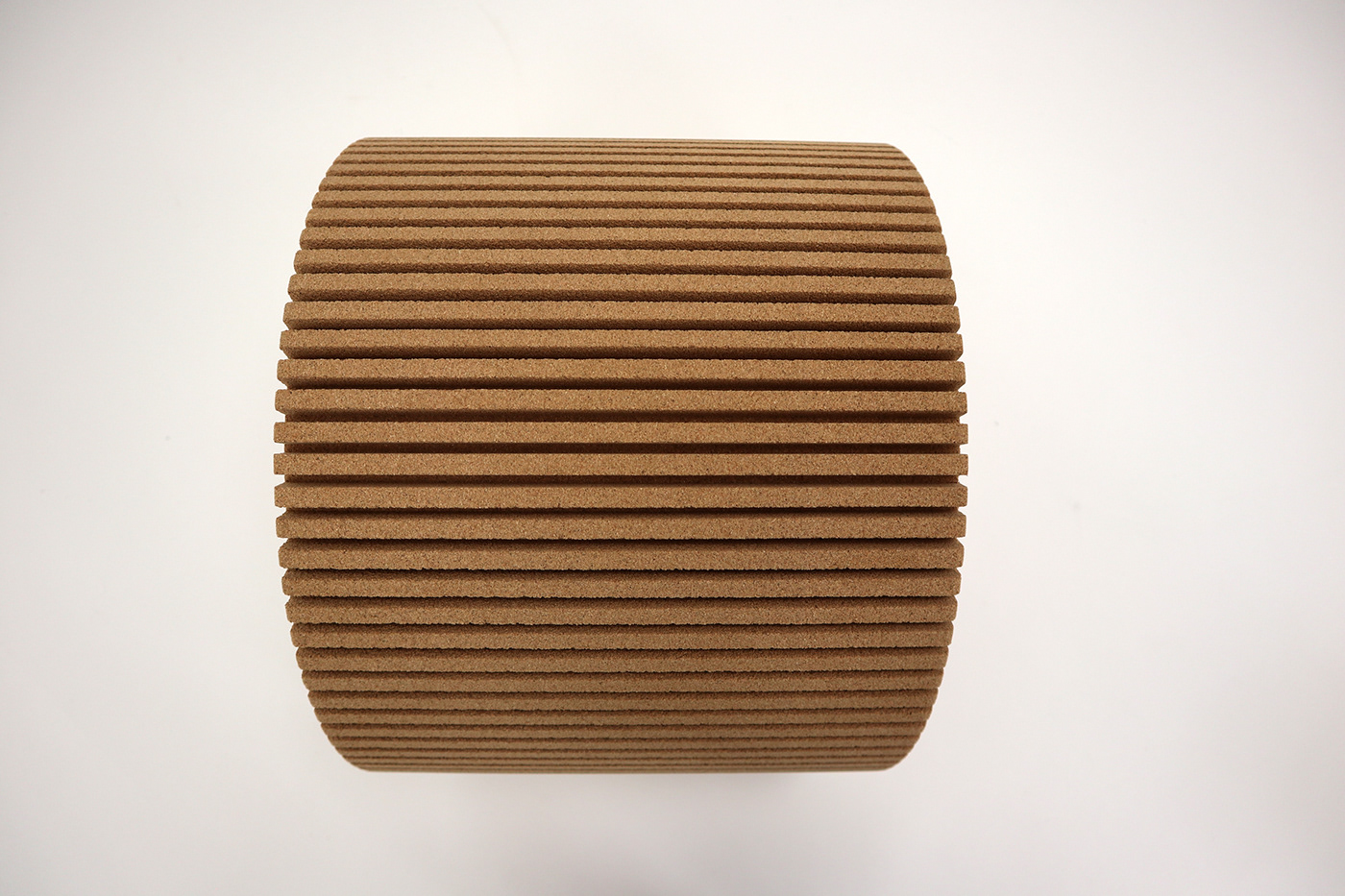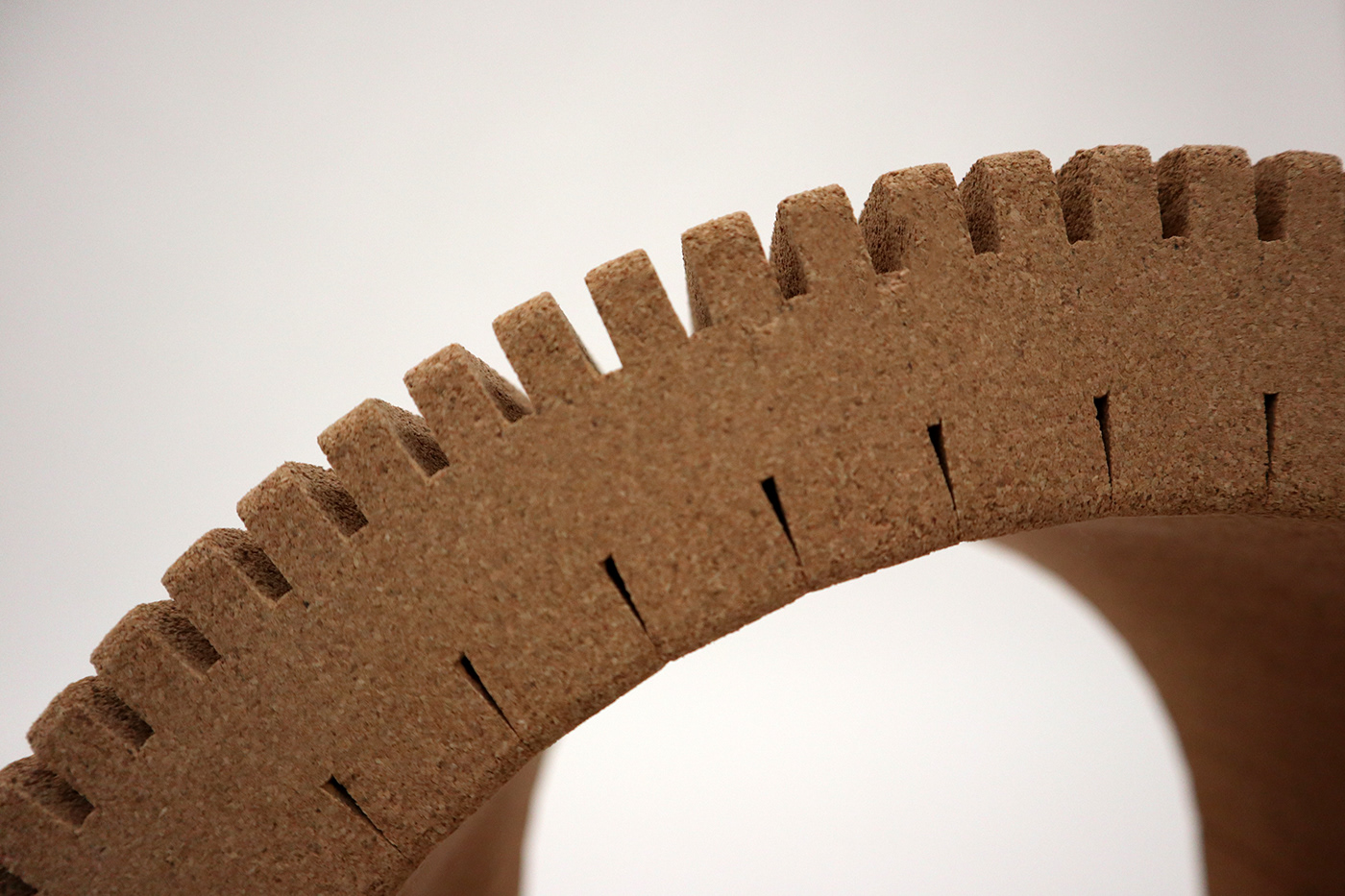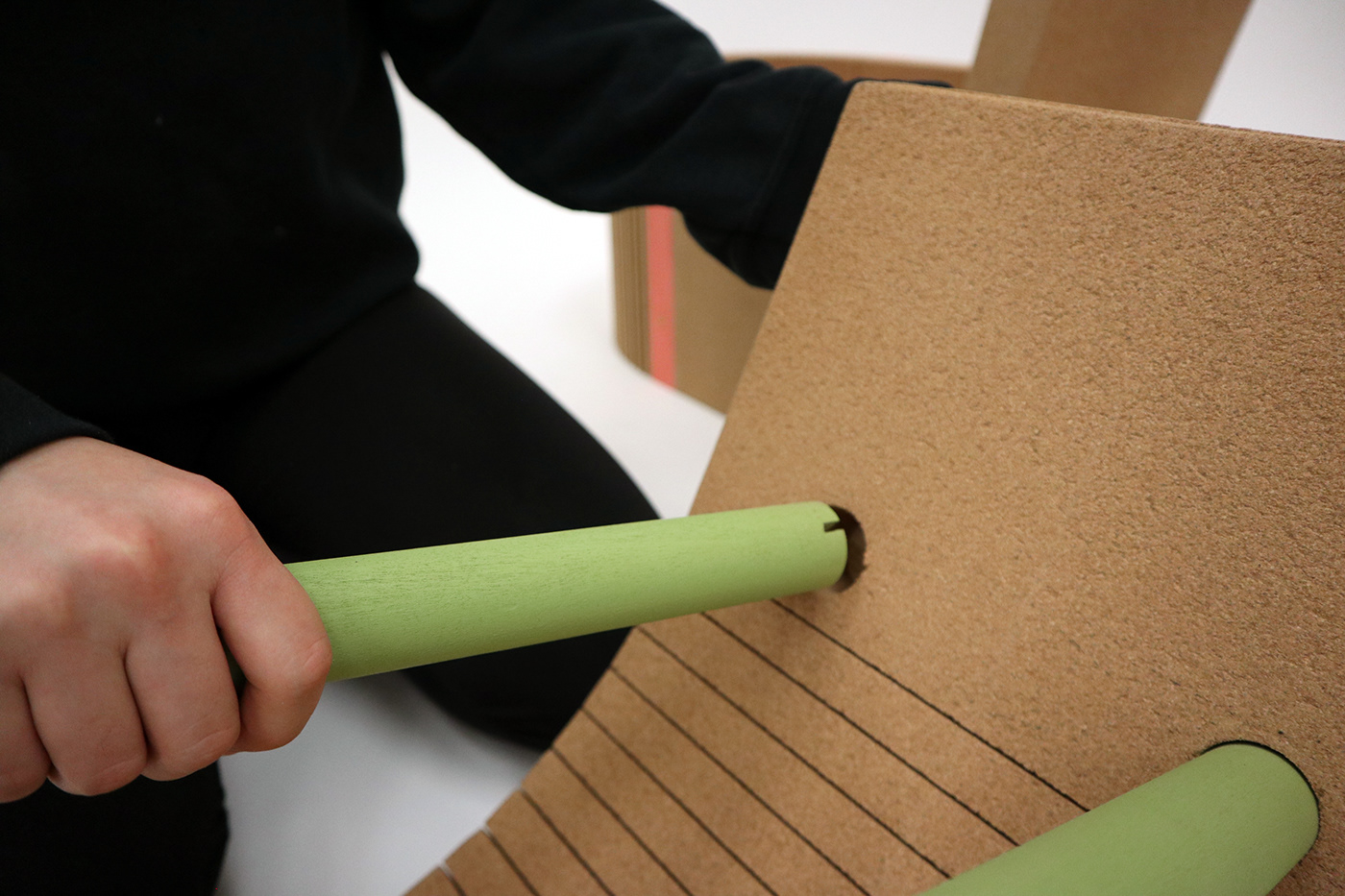Dome Stool
Ornament is commonly used in architecture, usually serves visual purposes. Under contemporary definition, ornamentation serves functional purposes as well. This Dome Stool falls in the function driven ornamentation, as the form and the stripe pattern both directly came from the structure and characteristic of the material, which naturally served as ornamentation of the piece.
Working with Cork, a required material for this class originated from Portugal, I did a wide range of experiments to learn about the material behaviour. Cork has a unique character as a natural wooden material. It is an extremely forgiving material that is very flexible in terms of the form, yet has almost zero material strength compare to other similar density soft wood. Although cork is still considered as a relatively new material, it had already established a visual identity, especially in terms of furniture due to its lack of material strength.
I focused on the flexibility of cork and modified a few cutting patterns that are commonly used in wood to give extra flexibility, trying to figure out the relationship between the cutting pattern and the resulted movement of cork sheets and blocks. By controlling the cutting depth, width and step size, I could control how cork bend in both horizontal and vertical directions, as well as the strength of the bent cork. The learning outcome allowed me to design this dome stool to escape from commonly seen chunky big cork furniture being a flat-packable stool with only three parts that supports up to 220 pounds. It is made simply from one sheet of cork bent with the pattern formed into a dome shape, and two wooden dowels pulling and holding the sides together. Two wooden stripes were inserted into the cork sheets for extra strength. The stool gives a slight bouncy feedback when sit onto it.
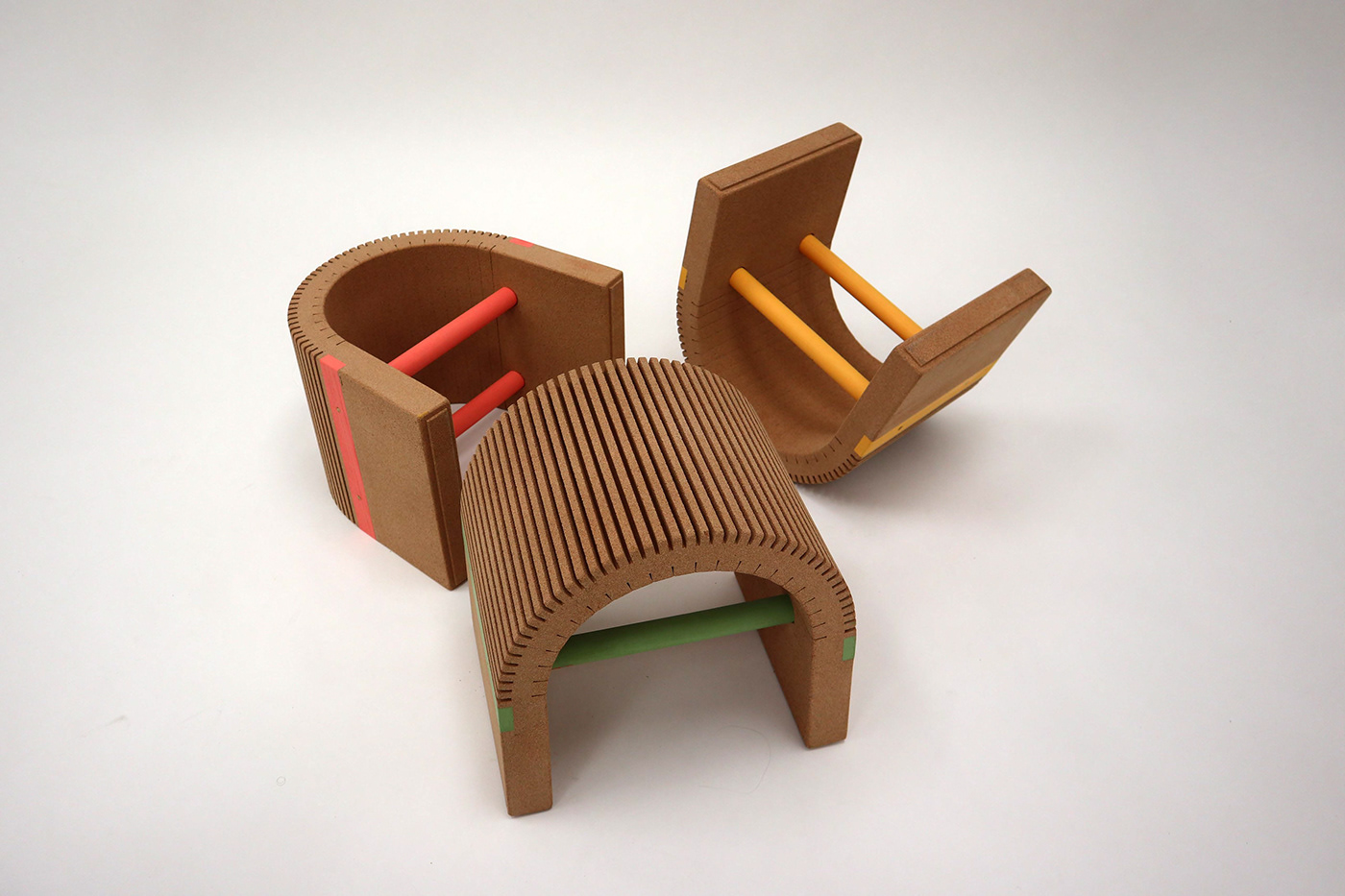

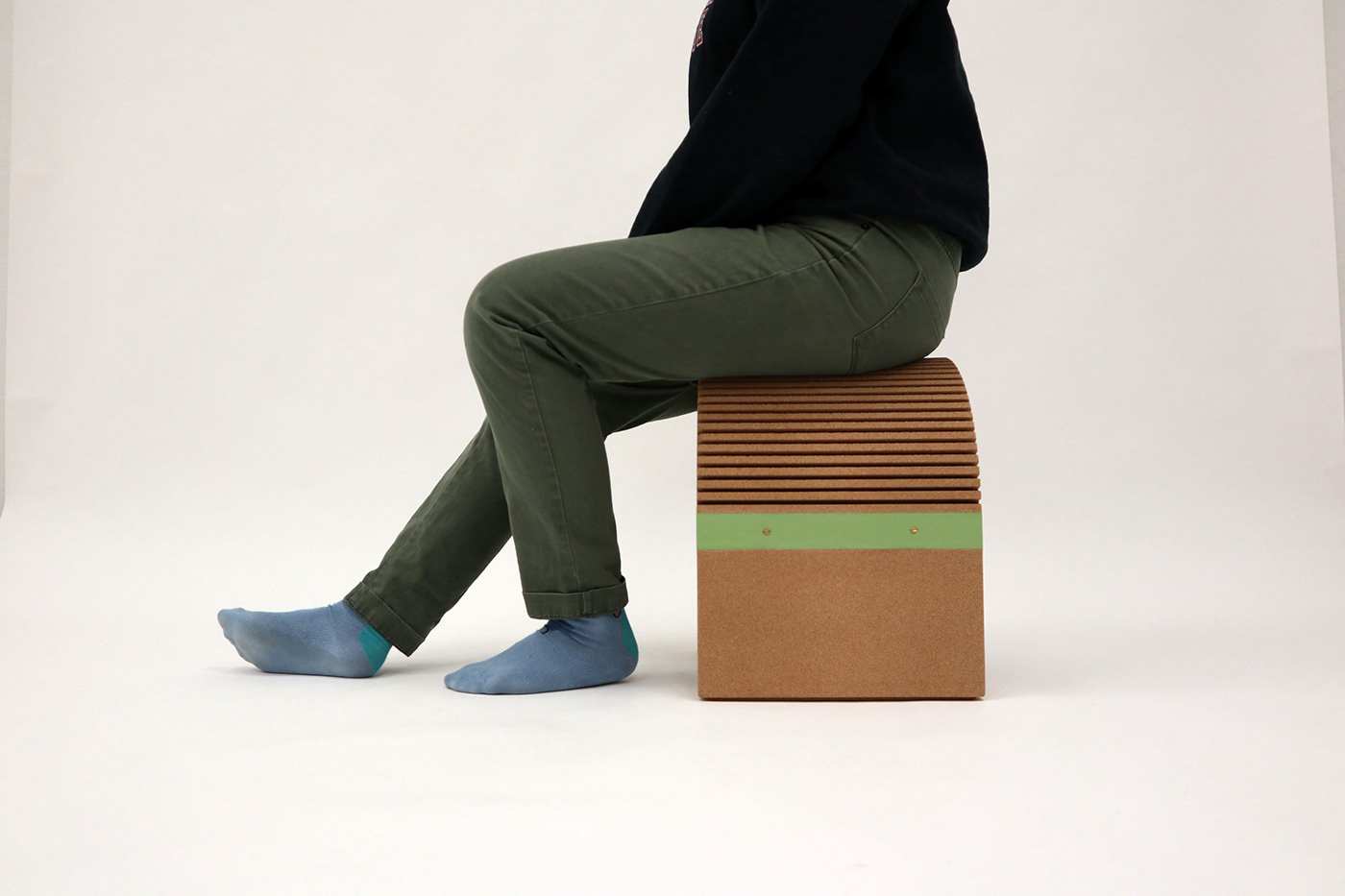

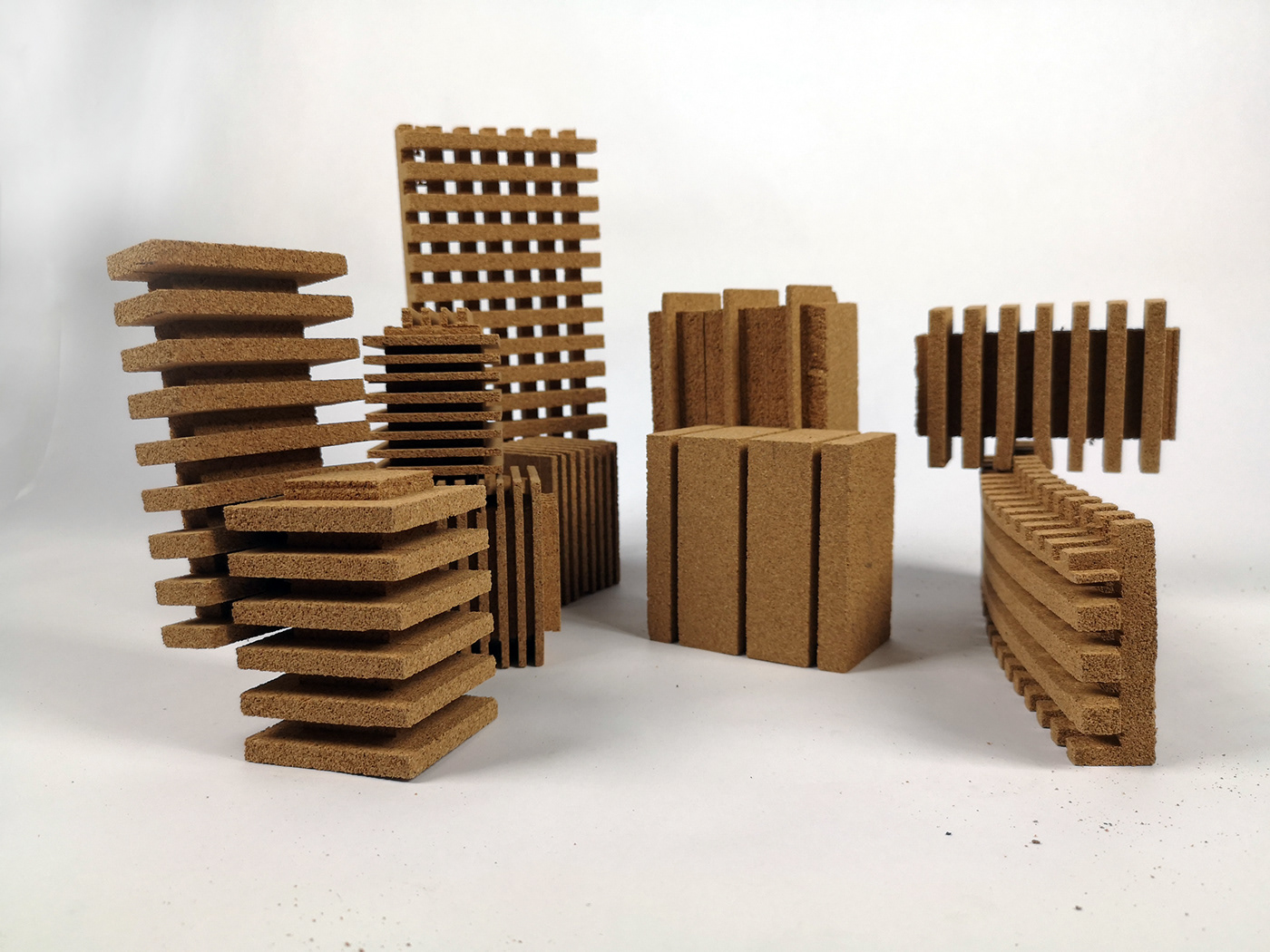
Material Study
I worked on different cutting patterns to understand the characteristics of the material, including friction, bending, and light.
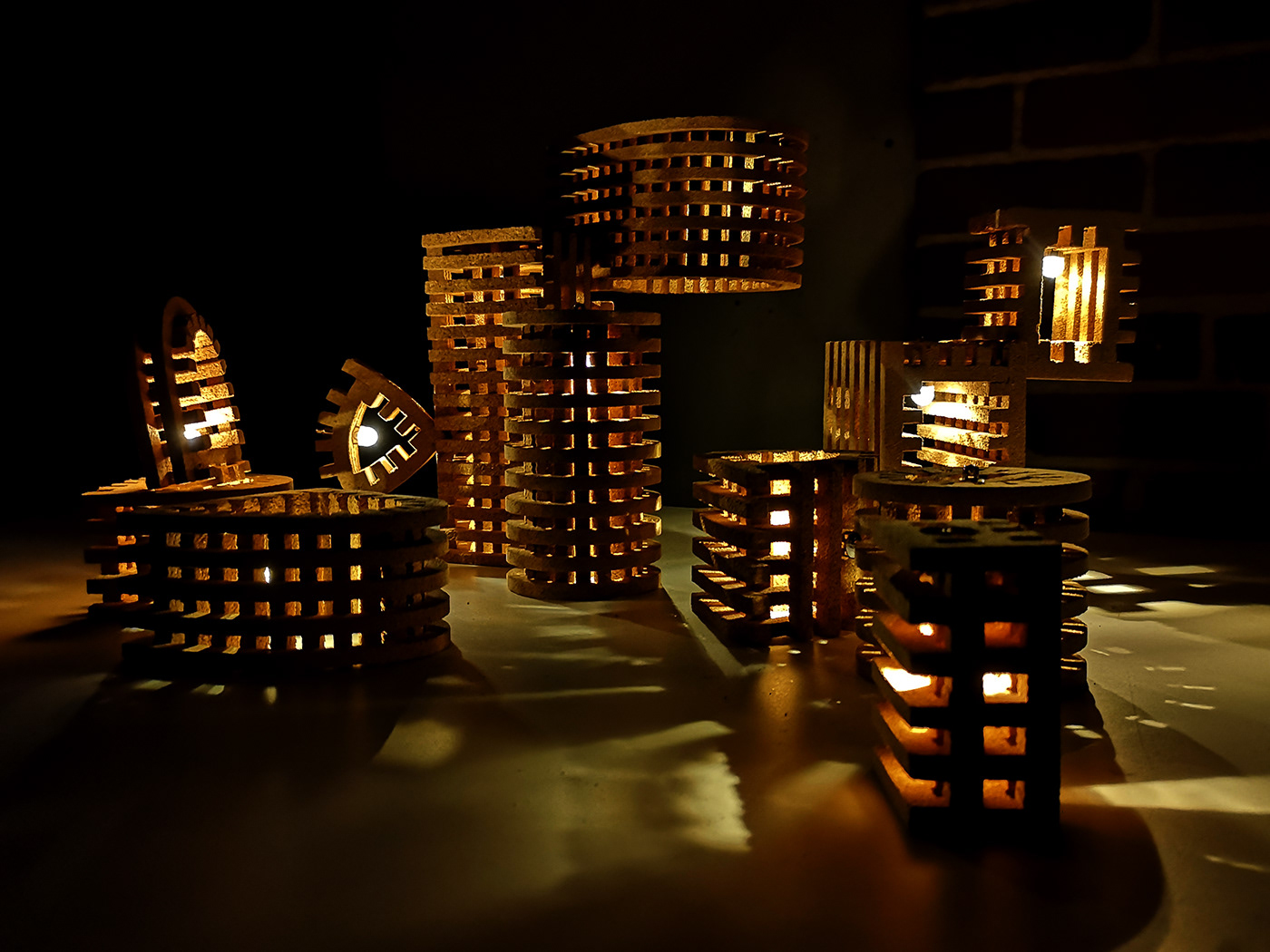
With the understanding of the material, I developed this lighting toy with cork and LED lights. User could attach each prism freely with the grid pattern and the friction of cork, to build their unique light installation. This study also helped me further more undrestoot the factors that affacts the bending ability of a cork board, including step size, cut depth, and wall thickness, which alowed me to developed the pattern of the final Dome Stool as shown in this project.


